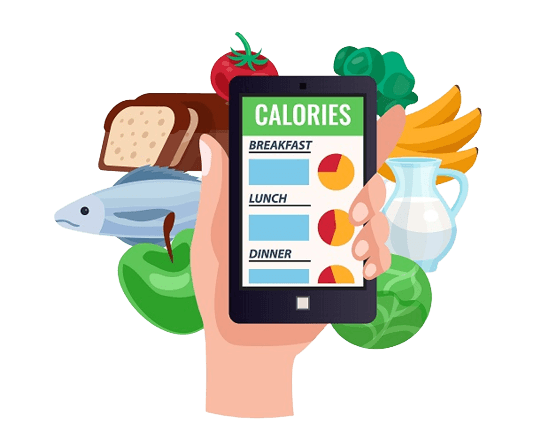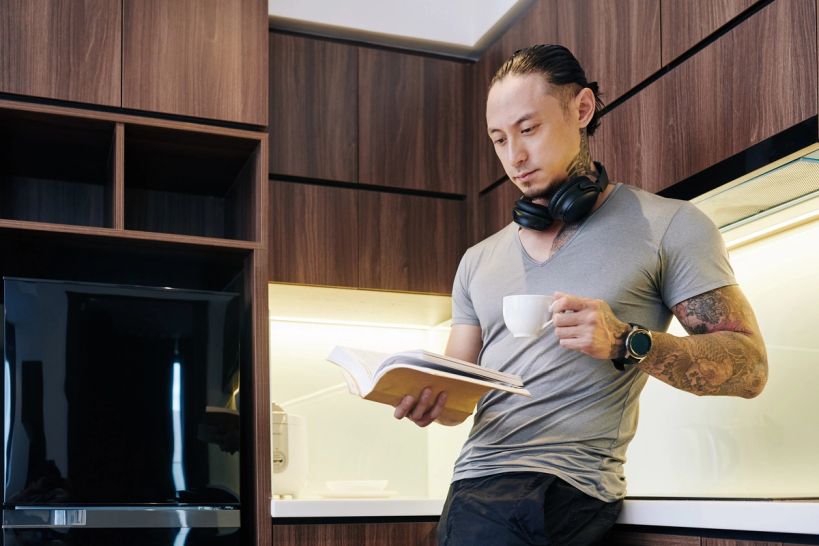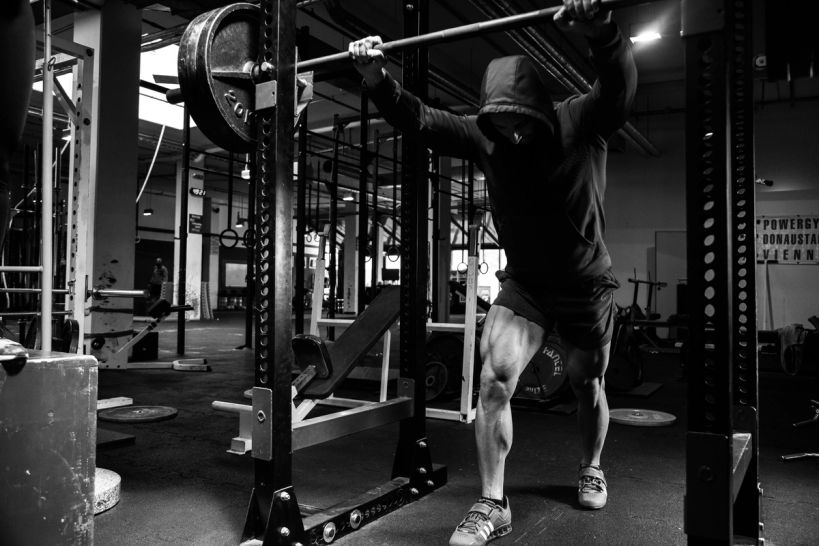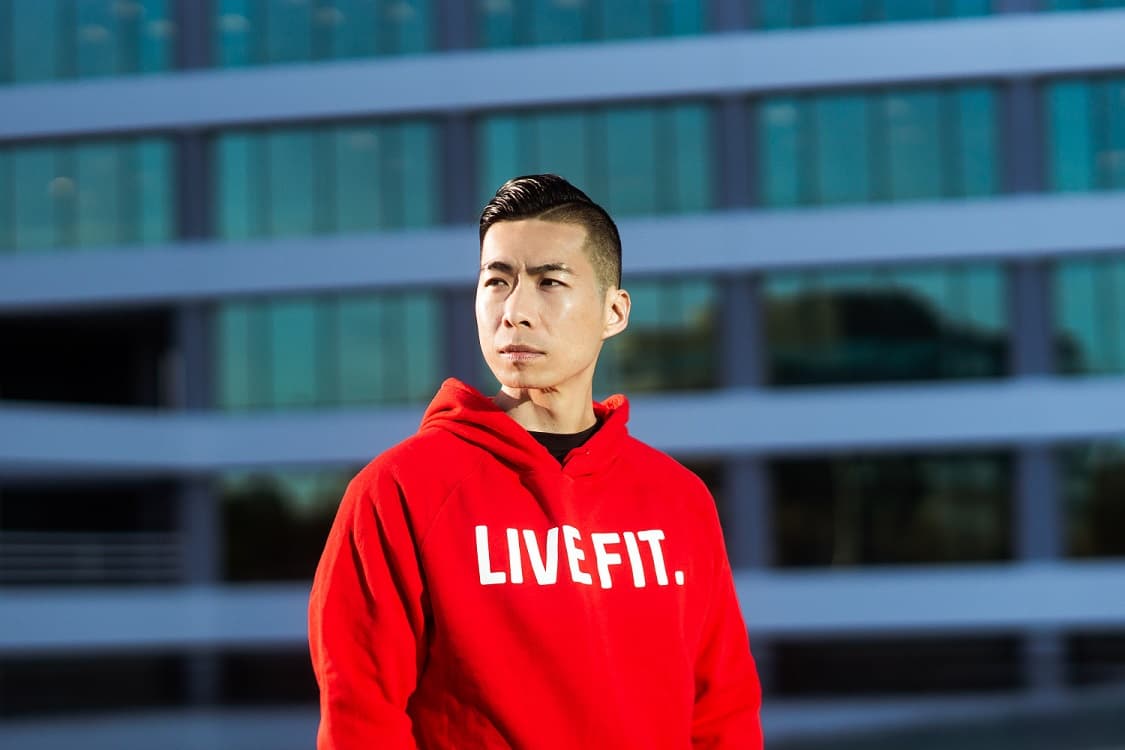5 Workout Routines to do at Home
Introduction
Welcome to the world of home workouts! In these challenging times, it has become more important than ever to find ways to stay active and fit within the confines of our own homes. With gyms closed and outdoor activities limited, it may feel like a daunting task to maintain an exercise routine. However, fear not! I'm here to guide you through 5 effective workout routines that you can easily perform in the comfort of your living room.
Importance of staying active and fit at home
Being physically active is not only crucial for our physical well-being but also plays a significant role in maintaining our mental health. Regular exercise helps release endorphins, those delightful little chemicals that give us a natural high and boost our mood. It can also reduce stress and anxiety levels, making us feel more energized and focused throughout the day. By engaging in home workouts, we have the opportunity to combat sedentary behavior effectively. Sitting for long periods can lead to various health problems such as weight gain, muscle stiffness, and decreased cardiovascular fitness. Incorporating regular exercise into our daily routine helps counteract these issues by keeping our muscles engaged and improving blood circulation. Additionally, staying active at home allows us to maintain or improve our overall fitness level. Whether you're a beginner or an experienced athlete, there are countless exercises that cater to all fitness levels. From cardiovascular workouts that increase endurance to strength training routines that build muscle tone, there's something out there for everyone!
Benefits of workout routines at home
The beauty of working out at home lies in its convenience and accessibility. No need for expensive gym memberships or fancy equipment – all you need is a small space in your living room and some determination! One major advantage is the flexibility it offers; you can exercise whenever it suits you, fitting your workout routine into your busy schedule without any hassle. Home workouts also provide a comfortable and non-intimidating environment. For those who may feel self-conscious or uncomfortable exercising in public spaces, working out at home eliminates these concerns. You can wear whatever you want, blast your favorite tunes, and even pause mid-workout to catch your breath without anyone judging you. Another benefit of home workouts is the ability to customize your routine according to your preferences and goals. Whether you're looking to lose weight, gain strength, or improve flexibility, there are endless options available for designing a workout plan that suits your specific needs. You can choose from various exercises and mix them up to keep things interesting! Let's not forget the financial aspect of home workouts. With budget-friendly options aplenty, such as online workout videos and fitness apps, you can save a significant amount of money compared to gym memberships or personal training sessions. Now that we've established the importance of staying active and fit at home and explored the numerous benefits it offers let's dive into our first workout routine: Full Body Workout!
Full Body Workout Routine
Warm-up exercises to prepare the body
Before diving into any workout routine, it's crucial to warm up your muscles properly. Start with some light cardio like jogging in place or jumping jacks. This will increase your heart rate and get the blood flowing throughout your body. Next, perform dynamic stretches such as arm circles, leg swings, and torso twists. These movements help to loosen up your joints and muscles, preparing them for the upcoming workout.
Squats: proper form and variations
Squats are a fantastic exercise that engages multiple muscle groups in your lower body, including quadriceps, hamstrings, glutes, and even calf muscles. To perform a proper squat: stand with your feet shoulder-width apart, toes pointing slightly outward. Lower yourself down by bending at the hips and knees until your thighs are parallel to the ground. Make sure to keep your back straight and chest lifted throughout the movement. For added challenge or variety, you can try different squat variations like sumo squats or jump squats.
Push-ups: different variations for different fitness levels
Push-ups are an excellent exercise for strengthening not only your chest but also your arms and core muscles. If you're new to push-ups or building upper body strength gradually, start with modified push-ups on your knees instead of full push-ups on toes. Place hands slightly wider than shoulder-width apart with fingers pointing forward. Lower yourself down by bending at the elbows until they reach a 90-degree angle before pushing back up to starting position. As you progress and gain more strength, you can challenge yourself with different push-up variations like diamond push-ups (hands close together forming a diamond shape), wide grip push-ups (hands placed wider than shoulder-width), or decline push-ups (feet elevated on a step or bench). These variations target different muscle groups and add variety to your workout routine.
Plank: engaging core muscles effectively
The plank is a simple yet highly effective exercise for engaging your core muscles, including the abs, obliques, and lower back. Start by getting into a push-up position on the floor, but instead of resting on your palms, balance on your forearms. Keep your body in a straight line from head to heels and hold this position for at least 30 seconds or longer if you can. Make sure to engage your core by pulling your belly button towards your spine throughout the exercise. To make the plank more challenging, you can try various plank variations like side planks (balancing on one forearm with feet stacked or staggered), knee-to-elbow planks (alternating bringing knee to opposite elbow), or plank jacks (jumping feet wide and back together while in plank position). These modifications intensify the workout and target different muscle groups within the core.
Lunges: targeting lower body muscles
Lunges are fantastic for targeting multiple muscles in your lower body, including quadriceps, hamstrings, glutes, and calves. To perform a lunge correctly: start by standing tall with feet hip-width apart. Take a big step forward with one leg while keeping the other leg stationary behind you. Lower yourself down until both knees are bent at approximately 90-degree angles. Push through the heel of the front foot to return to starting position. Repeat on alternate legs. For added variation or challenge to lunges, you can try reverse lunges (stepping backward instead of forward), walking lunges (continuously moving forward with each lunge), or lateral lunges (stepping out to one side instead of front). These variations engage different muscle fibers within your legs and enhance overall strength and stability.
Cool-down stretches to prevent muscle soreness
After completing your workout, it's important to cool down and stretch your muscles properly. This helps reduce muscle soreness and prevent injury. Perform static stretches where you hold each stretch for about 30 seconds without bouncing. Focus on stretching all major muscle groups like quadriceps, hamstrings, calves, chest, shoulders, and back. Some effective cool-down stretches include standing quad stretch (pulling one foot towards your glutes while standing), seated hamstring stretch (extend one leg and reach towards your toes), calf stretches (leaning against a wall with one leg straight back), and child's pose (sitting on your heels with arms extended forward). Remember to listen to your body during the cool-down phase. If any stretch feels uncomfortable or painful, ease up or skip it altogether. The goal is to relax the muscles gently after an intense workout session. By following this full-body workout routine with proper warm-up exercises, engaging in squats, push-ups, planks, lunges variations targeting different lower body muscles effectively, and concluding with cool-down stretches will help you achieve a well-rounded home workout that leaves you feeling strong and energized!
Cardiovascular Workout Routine
Jumping Jacks: A Classic Cardio Exercise
Jumping jacks are a fantastic way to get your heart pumping and your blood flowing. They are a classic exercise that targets multiple muscle groups while providing cardiovascular benefits. To perform jumping jacks, start by standing with your feet together and arms relaxed at your sides. Jump up, spreading your legs shoulder-width apart while simultaneously raising your arms overhead. Then, quickly jump back to the starting position, bringing your feet together and lowering your arms. Repeat this motion for a set number of repetitions or a specific duration.
High Knees: Increasing Heart Rate and Burning Calories
High knees are an excellent exercise for increasing heart rate, burning calories, and strengthening the lower body muscles. Begin by standing with your feet hip-width apart. Lift one knee as high as possible while driving the opposite arm forward in a running motion. Alternate between legs at a brisk pace while keeping the core engaged and maintaining an upright posture. Incorporating high knees into your cardio routine can help improve endurance and boost calorie burn.
Burpees: A Full-Body Exercise That Boosts Metabolism
Burpees are often considered the king of exercises when it comes to full-body workouts. This dynamic movement engages multiple muscle groups simultaneously, including the chest, shoulders, arms, core, glutes, and legs. To perform a burpee, start in a standing position with feet shoulder-width apart; then squat down with hands touching the ground in front of you. Kick both feet back into a push-up position and immediately return them to the squat position before explosively jumping up while reaching towards the ceiling or clapping overhead. Burpees elevate heart rate rapidly and can significantly boost metabolism during and after workouts.
Mountain Climbers: Engaging Multiple Muscle Groups
Mountain climbers are a fantastic exercise for engaging multiple muscle groups, including the shoulders, arms, core, and legs. Begin in a high plank position with your hands directly under your shoulders and your body forming a straight line from head to heels. From there, alternate driving one knee towards the chest while keeping the opposite leg extended. Move at a moderate pace or increase intensity by speeding up to get the heart rate up and maximize calorie burn.
Jump Rope: An Effective Calorie Burner
Jumping rope is not only nostalgic but also an effective way to torch calories while improving cardiovascular fitness. This low-cost exercise can be done almost anywhere with enough space. Grab a jump rope and jump with both feet together, slightly bouncing off the balls of your feet as you swing the rope around you. Start with 30-second intervals and gradually increase duration as you become more comfortable. Jumping rope not only increases heart rate but also improves coordination and agility.
Tips for Monitoring Heart Rate During Cardio Workouts
Monitoring your heart rate during cardio workouts is crucial to ensure that you are working within your target heart rate zone for optimal benefits. One way to estimate this zone is by subtracting your age from 220 to find your maximum heart rate (MHR). To work within different intensity levels, multiply this MHR by percentages ranging from 50% to 85%. For example, if you're 30 years old and want to work at moderate intensity, multiply 190 (220-30) by 0.5 or 0.6 (50% or 60%). Using wearable fitness devices or even mobile apps can help track heart rate accurately during workouts. Remember that cardiovascular exercises can be modified based on individual fitness levels and preferences. It's essential always to warm up before starting any cardio routine and gradually increase intensity over time as you build strength and endurance. By incorporating jumping jacks, high knees, burpees, mountain climbers, and jump rope into your workout routine while monitoring your heart rate, you'll be well on your way to improving cardiovascular health and achieving your fitness goals.
Strength Training Routine with Minimal Equipment
Bodyweight exercises for strength training
When it comes to building strength at home, you don't necessarily need fancy equipment or weights. Bodyweight exercises can be highly effective in targeting different muscle groups and improving overall strength. They are versatile, convenient, and can be modified to suit various fitness levels.
1. Push-ups, squats, lunges, and planks as mentioned earlierPush-ups, squats, lunges, and planks are foundational exercises that engage multiple muscles simultaneously. Push-ups primarily target the chest, shoulders, and triceps while also engaging the core muscles. Squats work the lower body muscles such as quadriceps, hamstrings, and glutes. Lunges target the same muscle groups but with a greater emphasis on balance and stability. Planks are excellent for strengthening the core muscles including the abs and back.
2. Tricep dips using a sturdy chair or benchTricep dips are an effective exercise for targeting the back of your arms (triceps). To perform tricep dips at home without any specialized equipment, you can use a sturdy chair or bench. Start by sitting on the edge of the chair with your hands gripping the edge just outside your hips. Extend your legs out in front of you with your feet flat on the ground. Lower yourself down by bending your elbows to a 90-degree angle while keeping your back close to the chair's edge. Push yourself back up to complete one repetition.
3. Glute bridges for targeting the posterior chainGlute bridges are fantastic for activating and strengthening your glutes (butt) along with engaging other muscles in your posterior chain like hamstrings and lower back muscles too! To perform a glute bridge at home without any equipment: lie on your back with your knees bent, feet flat on the ground, and arms at your sides. Push through your heels to lift your hips off the ground until there's a straight line from your knees to shoulders. Squeeze your glutes at the top and slowly lower back down to complete one repetition.
4. Pike push-ups to work the shoulders and upper bodyPike push-ups are an excellent exercise for targeting the shoulders and upper body muscles without any equipment. Start in a downward-facing dog position with your hands pressing firmly into the ground and hips lifted high. Walk your feet towards your hands, keeping legs as straight as possible, until you feel a deep stretch in your hamstrings. From this position, lower yourself down by bending at the elbows while maintaining control and stability throughout the movement. Push yourself back up to complete one repetition.
5. Step-ups on stairs or an elevated platformStep-ups are a great way to target the lower body muscles including quadriceps, hamstrings, glutes, and calves. Find a sturdy staircase or an elevated platform that is comfortable for you to step onto with one foot while the other foot remains on the ground. Step up onto the platform by driving through your heel of the working leg until fully extended. Lower yourself back down by stepping back with that same leg while maintaining control throughout the movement. Remember, when performing these exercises at home, it's important to prioritize proper form over quantity or speed of repetitions. Take it slow initially, focusing on maintaining good alignment and engaging targeted muscles effectively. Gradually increase intensity and repetitions as you become more comfortable with each exercise.
Yoga and Stretching Routine
Benefits of incorporating yoga into workout routines
When it comes to enhancing flexibility, building strength, and finding inner peace, yoga is an excellent addition to any workout routine. Incorporating yoga into your at-home workouts can provide countless benefits for both your body and mind. Not only does it help improve overall flexibility by lengthening muscles and increasing joint mobility, but it also aids in building core strength and improving posture. Moreover, practicing yoga regularly can reduce stress levels, promote relaxation, and enhance mental clarity. It serves as a perfect balance between physical exertion and mental rejuvenation.
Sun salutations as a warm-up sequence
A great way to kickstart your yoga routine is by performing sun salutations as a warm-up sequence. Sun salutations are a flowing series of poses that help awaken the body while connecting breath with movement. Start by standing at the front of your mat with feet together. As you inhale, raise both arms overhead and extend the spine gently backward in a slight backbend. As you exhale, fold forward from the hips with a straight back until you reach the floor or touch your shins. Inhale again while stepping one foot back into a lunge position, followed by the other foot so that you are in a plank pose. Slowly lower your body down to the floor and then lift up into upward-facing dog or cobra pose on an inhalation. Exhale while lifting your hips up into downward-facing dog pose.
Standing poses like warrior II, tree pose, and triangle pose
Incorporating standing poses into your yoga routine can provide an array of benefits for strength building and balance improvement. Warrior II is a powerful standing pose that strengthens leg muscles while opening up hips and shoulders simultaneously. Tree pose challenges balance while also toning leg muscles and improving focus. Triangle pose is another fantastic standing posture that stretches the hamstrings, opens up the chest, and strengthens the legs. These poses can be held for several breaths to reap their full benefits.
Seated poses such as forward fold, butterfly pose, and spinal twist
Seated poses in yoga are perfect for targeting specific areas of the body while promoting relaxation. Forward fold is a calming pose that stretches the hamstrings and lower back while helping to relieve stress and anxiety. Butterfly pose targets the hips and inner thighs, promoting flexibility in those areas. Spinal twists are excellent for releasing tension from the spine, improving digestion, and increasing spinal mobility.
Relaxation poses like Corpse pose
After an intense workout or a long day, it is essential to wind down with relaxation poses that help calm both mind and body. Corpse pose (Savasana) is one such posture where you lie flat on your back with arms relaxed by your sides. It allows your body to rest completely while focusing on deep breathing and letting go of any accumulated tension or stress. Conclusion:Incorporating a yoga routine into your at-home workouts can bring about tremendous physical and mental benefits. Whether you are seeking increased flexibility, strength building, or simply finding moments of peace amidst chaos, yoga offers it all. With various warm-up sequences like sun salutations, standing poses such as warrior II or tree pose, seated postures like forward fold or butterfly pose, along with relaxation poses like corpse pose - there's something for everyone in a yoga practice. So roll out your mat at home and embrace this ancient practice that not only nourishes your physical body but also uplifts your spirit in these challenging times. Namaste!
About The Author


Get your macronutrients breakdown
Fill out the form below to get a preview of your recommended daily calorie and macronutrient breakdown.

Stubborn Subcutaneous Fat Loss | 3 Tips
Stubborn Subcutaneous Fat Loss | 3 Tips Introduction When it comes to shedding those stubborn pounds, one particular type of fat seems to be particu...

Keeping A Fitness Journal to Find Your Perfect Routine
Keeping A Fitness Journal to Find Your Perfect Routine Introduction Have you ever felt like you're wandering aimlessly in the world of fitness, unsu...



